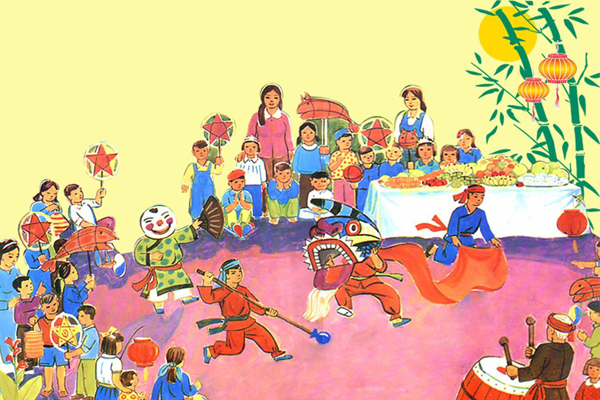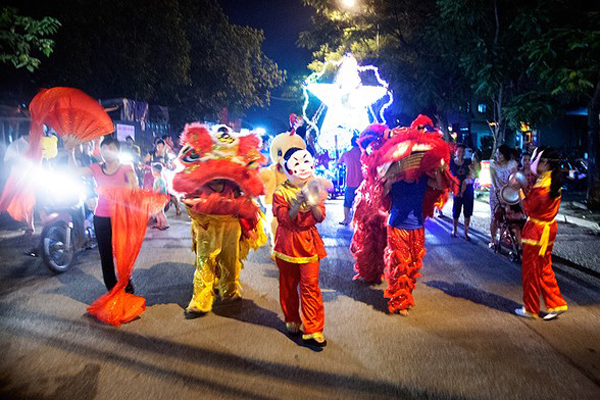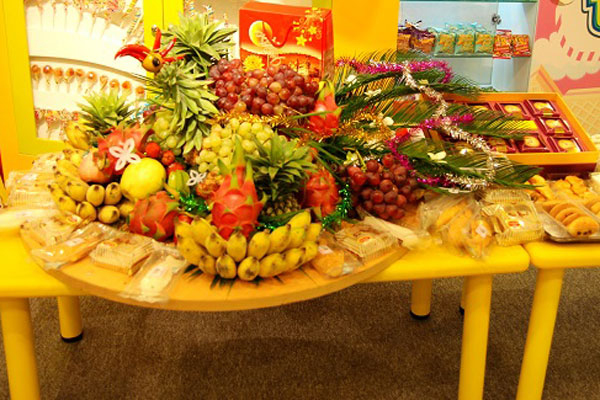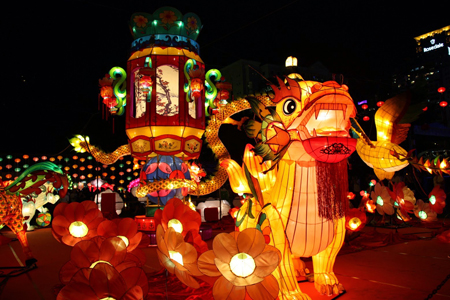I was born in the Old Quarter of Hanoi, in Hemp Street where lived retired Confucian scholars and impecunious junior mandarins and where were sold books in Han and Nom characters printed from wood blocks, besides paper and pen brushes. One feature of the street can be imagined by the younger generations only with difficulty: each year, between the 1st and 15th days of the 8th moon, it was turned into a joyous fair where were offered to view all kinds of paper toys which sent children into raptures: lion's head, lanterns in the shape of rabbit, toad, fish, dragon, oil lamps showing shadow plays... Around the same period drums were sold in Drum Street, toys made of tin sheets retrieved from empty cans in Tinsmiths' Street, pastry in Sugar Street. Hanoi was filled with the joys and delights of the Mid-Autumn Festival, the Tet of the Moon.

The climax came on the night of the 15th day of the month In the cycle of seasons, in which alternate the yang (male) and yin (female) principles, the Tet Trung thu (Mid- Autumn Festival) is celebrated around the autumn equinox, at a time when the yin (cold, darkness, the moon) begins to get the better of the yang (warmth, light, the sun). On that night, the sky is crystal clear, the moon is a perfect circle of unearthly splendor. Gazing at its magnificence scholars would compose poetry while sipping chrysanthemum-flavored rice wine. Gourmets would taste little balls of steamed chopped pork and paddy snail wrapped in ginger leaves. Would-be astrologers scrutinized the face of the moon to predict the country's future. If it shone with pure brightness, the rice harvest would be plentiful. If it was yellowish, the silkworms would give excellent cocoons. If it was greenish or bluish there would be a famine...
The dragon, like the moon, got pride of place because it brought rain to the rice fields and protected the important autumn harvest.

The dragon dance performed during the festival had lost its ritual meaning. The procession featured pennants of five different colors, lanterns in the shape of various fruits and animals, and a unicorn's (or lion’s, su tu) head to which was attached a "tail" of red fabric. Among the legends related to fertility, like that of the dragon, let us mention those of the hare and the toad. It is said that the palace of the Toad stands on the moon, and is called Thiem cung (Palace of the Toad). A folk story tells us that when there is a drought and the Toad gnashes its teeth, the Heavenly Emperor must order his dragons to make rain. According to another, the female of the hare, the symbol of Buddhist piety, will conceive its young by looking at the moon.

The Mid-Autumn festival is essentially a child’s one. When I was a child, well-off families would lay out a "banquet for the children", the equivalent of a Christmas tree in our country. On a table the parents would lay on fruits (custard-apples, grape-fruit, persimmons. ..), flowers carved in green papaws, figurines of various animals molded in colored rice dough (pigeons, carps, hares, cats, dogs...), coconut shells fashioned into hares, unicorns or dogs with their bodies coated with the pulpy flesh of grapefruit, eggs with their shells painted in five colors, symbolizing fertility, bundles of sugar-cane sticks colored dark-red, white and elastic banh deo cakes, moon-shaped yellow baked banh nuong... It was a good occasion for young girls of the house to show off their skills to visiting suitors and their families. The merry-making lasted late into the night while in the streets long processions of dragons, unicorns and lions took place in the light of lanterns and torches, amid the sound of gongs and drums.



